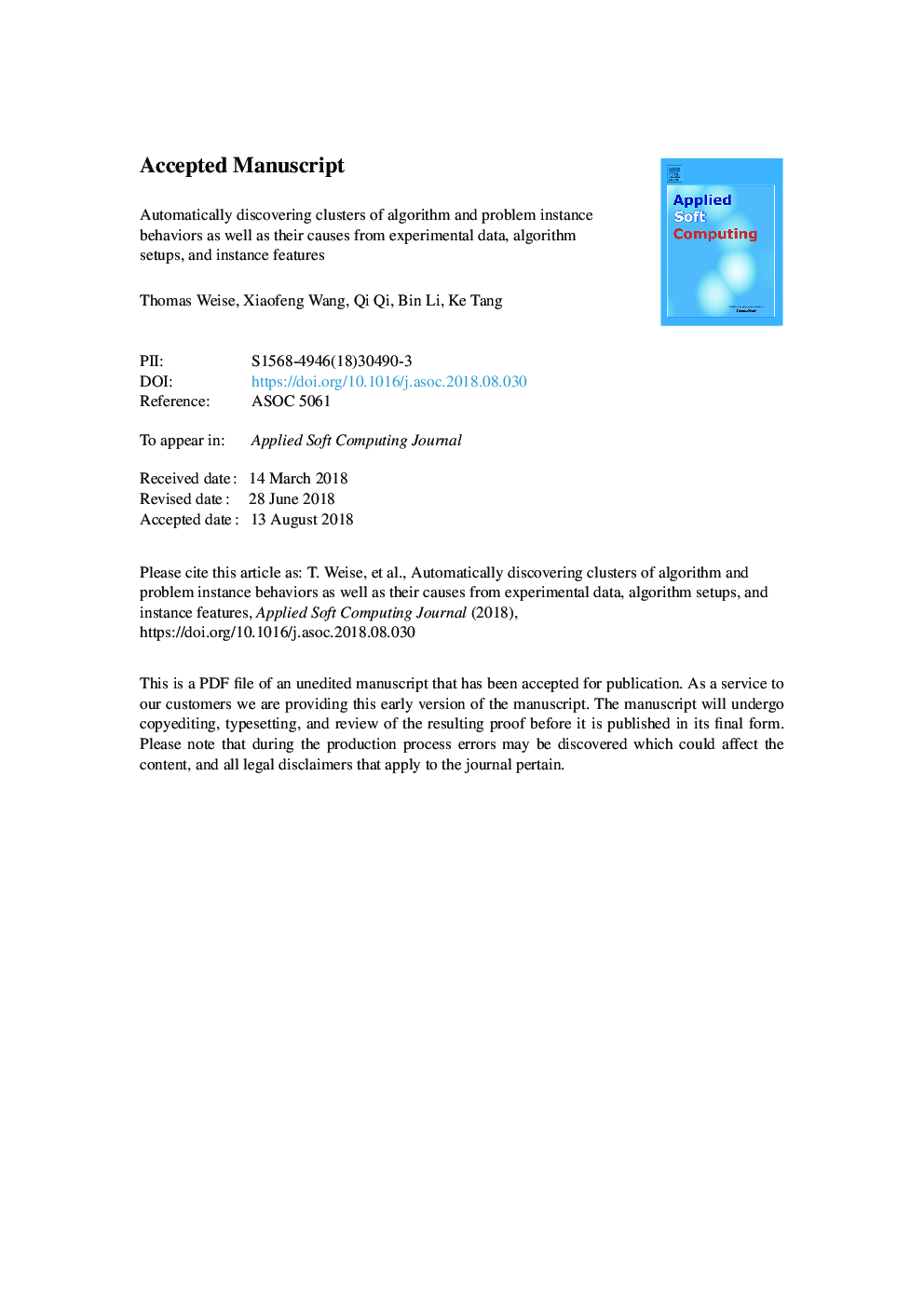| کد مقاله | کد نشریه | سال انتشار | مقاله انگلیسی | نسخه تمام متن |
|---|---|---|---|---|
| 10139483 | 1645964 | 2018 | 57 صفحه PDF | دانلود رایگان |
عنوان انگلیسی مقاله ISI
Automatically discovering clusters of algorithm and problem instance behaviors as well as their causes from experimental data, algorithm setups, and instance features
ترجمه فارسی عنوان
به صورت خودکار کشف خوشه های الگوریتم و رفتارهای مثال نمونه به عنوان علل آنها از داده های آزمایشی، تنظیمات الگوریتم و ویژگی های نمونه
دانلود مقاله + سفارش ترجمه
دانلود مقاله ISI انگلیسی
رایگان برای ایرانیان
کلمات کلیدی
آزمایش معیار سنجش، بهینه سازی، رفتار زمان اجرا، مدل سازی، خوشه بندی طبقه بندی،
موضوعات مرتبط
مهندسی و علوم پایه
مهندسی کامپیوتر
نرم افزارهای علوم کامپیوتر
چکیده انگلیسی
In the fields of heuristic optimization and machine learning, experimentation is the way to assess the performance of an algorithm setup and the hardness of problems. Most algorithms in the domain are anytime algorithms, meaning that they can improve their approximation quality over time. This means that one algorithm may initially perform better than another one, but converge to worse solutions in the end. Instead of single final results, the whole runtime behavior of algorithms needs to be compared. Moreover, a researcher does not just want to know which algorithm performs best and which problem is the hardest - she/he wants to know why. In this paper, we introduce a process which can 1)Â automatically model the progress of algorithm setups on different problem instances based on data collected in experiments, 2)Â use these models to discover clusters of algorithm (or problem instance) behaviors, and 3)Â propose causes why a certain algorithm setup (or problem instance) belongs to a certain algorithm (or problem instance) behavior cluster. These high-level conclusions are presented in form of decision trees relating algorithm parameters (or instance features) to cluster ids. We emphasize the duality of analyzing algorithm setups and problem instances. Our process is implemented as open source software and tested in two case studies, on the Maximum Satisfiability Problem and the Traveling Salesman Problem. Besides its basic application to raw experimental data, yielding clusters and explanations of “quantitative” algorithm behavior, our process also allows for “qualitative” conclusions by feeding it with data which is normalized based on problem features or algorithm parameters. It can also be applied recursively, e.g., to further investigate the behavior of the algorithms in the cluster with the best-performing setups on the problem instances belonging to the cluster of hardest instances. Both use cases are investigated in the case studies. We conclude our article by a comprehensive analysis of the drawbacks of our method and with suggestions on how it can be improved.
ناشر
Database: Elsevier - ScienceDirect (ساینس دایرکت)
Journal: Applied Soft Computing - Volume 73, December 2018, Pages 366-382
Journal: Applied Soft Computing - Volume 73, December 2018, Pages 366-382
نویسندگان
Thomas Weise, Xiaofeng Wang, Qi Qi, Bin Li, Ke Tang,
